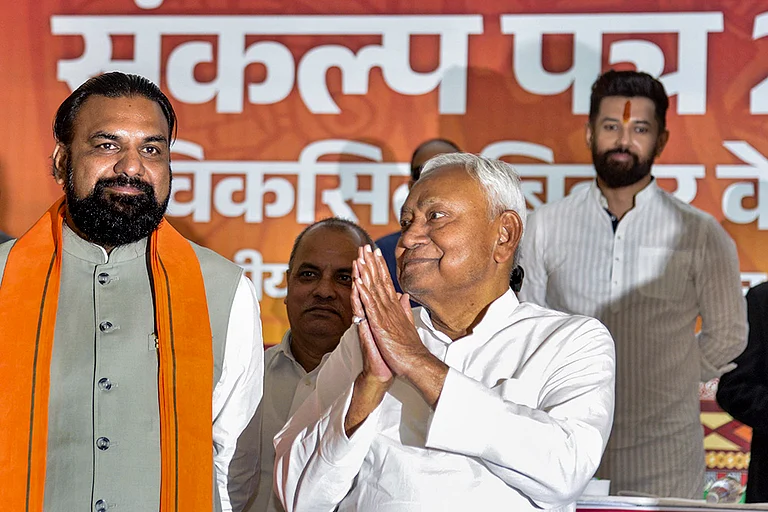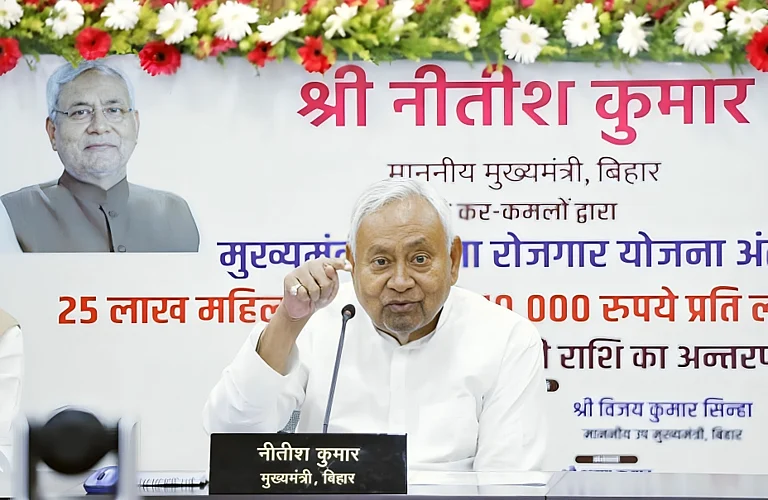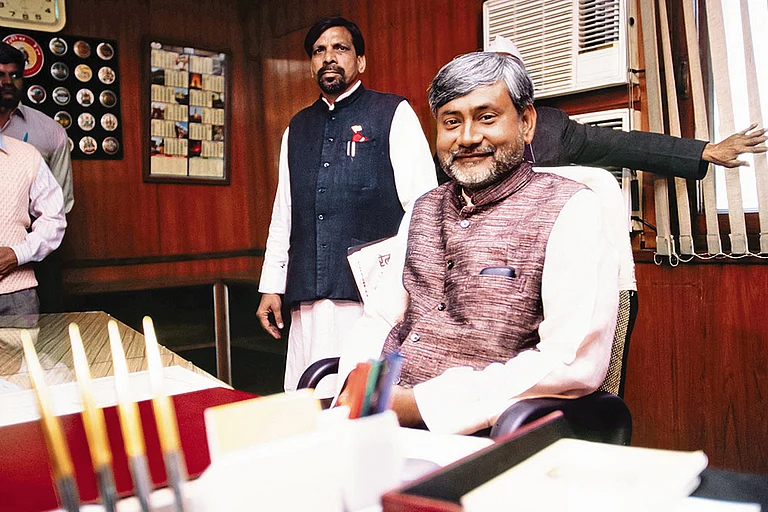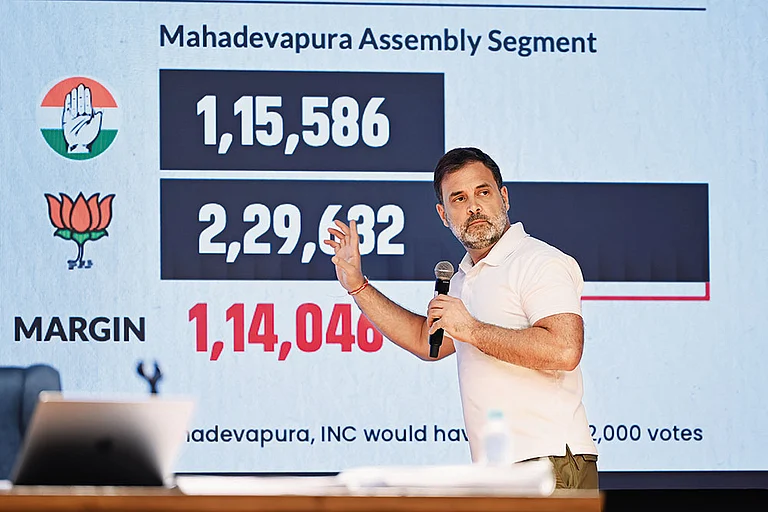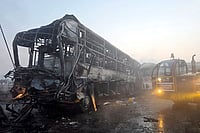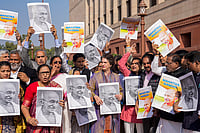
A state of over 83 million people, Bihar has 40 seats.
Over four crore Biharis work outside, sustaining other states and sending back remittances that outstrip Bihar’s own ₹10.97 lakh crore GSDP.
Bihar’s 40 MPs can sway the Rajya Sabha and shape the momentum for the 2029 general election.
Picture this: a young auto-rickshaw driver on Patna’s crowded Fraser Road, hands rough from endless shifts, eyes dulled under the October sun. He’s about Tejashwi Yadav’s age—mid-30s—but feels twice as old, scraping by on fares that barely feed his family. “Kaun jeetega? Hum haar rahe hain har roz,” he mutters. Who will win? That question hums through Bihar’s narrow lanes as the Election Commission announces the state’s two-phase polls—November 6 and 11, with results on November 14, fittingly Children’s Day. A date meant for innocent hope now bears political reckoning.
If the Congress-led Mahagathbandhan under the INDIA bloc barely wins, it would reflect the Nehruvian vision of fairness and justice that once influenced Bihar’s politics. Yet early surveys suggest a different trend. The NDA—a lasting coalition formed through caste-based calculations and political strategies—holds the lead. In Bihar, voting is more than a democratic act; it is a direct confrontation amid historic divisions and long-unfulfilled aspirations.
A State of Contradictions and Continuities
Bihar’s journey is fraught with contradictions, tragedy entwined with endurance. The 2000 Bihar Reorganisation Act cleaved the state, stripping it of Jharkhand’s forests and minerals. Once a powerhouse of 83 million people and 54 Lok Sabha seats, Bihar was reduced to a 40-seat state of 13 crore. The split ushered in a "special politics" as leaders like Nitish Kumar and the Yadavs learned to wield Delhi’s levers from Patna.
Migration remains Bihar’s most telling statistic. Over four crore Biharis work outside, sustaining other states and sending back remittances that outstrip Bihar’s own ₹10.97 lakh crore GSDP. Yet per capita income stays trapped at ₹68,828—₹50,000 below the national average. This drives a quiet exodus of youth. As crores of voters prepare to cast ballots, the state’s verdict carries national weight. Its 40 MPs can sway the Rajya Sabha and shape the momentum for the 2029 general election. It can even impact the existence of the NDA Government.
Caste sits at the heart of this politics: both scaffolding and shackling. Nitish Kumar’s 2023 caste survey was more than an enumeration; it was a revelation. It counted 36.01 per cent Extremely Backward Classes, 27.13 per cent OBCs, 14.27 per cent Yadavs, 19.65 per cent Dalits, and 15.52 per cent upper castes. The results triggered new reservation demands, lawsuits, and sharpened the polarisation between RJD’s “MY” (Muslim-Yadav) bloc and NDA’s intricate alliance of EBCs, upper castes, and Dalits. In Muzaffarpur’s fields, one farmer summed it up: “Hum EBC hain, par vote hamara nahi, unka.” We belong to the EBCs, but our votes belong to someone else. In Bihar, caste is not just identity. It’s the lens for justice, loyalty, and even God.
Nitish Kumar’s Tightrope and the NDA’s Arithmetic
Few figures loom over Bihar’s landscape like Nitish Kumar. He is the wily, weary, silver-haired survivor of Indian politics. At 74, his health flickers as a topic of speculation. Yet his brand of sushasan—good governance—endures in the paved roads cutting through forgotten hamlets and 24-hour power that reaches mud huts. But even progress can grow stale. “Nitish ji ne sadak banaya, par sapne nahi,” says a tea-seller near Gandhi Maidan. Roads, yes. Dreams, no.
Nitish’s career shows adaptability. He was with Lalu’s RJD against BJP’s Ram wave in 1990, split in 1995, joined NDA in 2005, left over Modi’s rise in 2013, sided with RJD-Congress in 2015, returned to NDA in 2017, rejoined RJD in 2022, and finally went back to BJP in 2024. The nickname “Paltu Ram” sticks, but in Bihar’s pragmatic politics, loyalty is a luxury.
The NDA today is a careful patchwork: JD(U)’s Kurmi base, BJP’s upper-caste and urban muscle, Chirag Paswan’s LJP(RV) commanding five per cent Paswan influence, and Jitan Ram Manjhi’s HAM(S) courting Mahadalits. The BJP, despite its national might, has never ruled Bihar alone. Its best performance—74 seats in 2020—came tethered to Nitish’s JD(U). Historically, its vote share hovers around 20–25 per cent, reliant on allies to cross the 122-majority line.
Recent polls by IANS-Matrize and NewsX forecast 136 to 150 seats for the NDA, giving it an edge. Yet this numerical comfort hides unease. In flood-hit Gaya, the 2024 deluge destroyed crops worth ₹6,000 crore. "Viksit Bihar" sounds more like an aspiration than an achievement. The NDA’s challenge is less arithmetic than empathy—can its slogans reach those whose stomachs remain empty?
The Opposition’s Attempts and the Wildcard Factor
Across the aisle, the Mahagathbandhan is a quilt of contradictions stitched together by necessity. The RJD’s 75 seats, Congress’s 19, and the Left’s 16 from 2020 make it formidable on paper. Its purpose is fragile. At its centre stands Tejashwi Yadav, 36, Lalu’s son and inheritor of both legacy and liability. Acquitted in 2024 of the land scam case, he campaigns with a mix of idealism and defiance. He promises ten lakh jobs, ₹10,000 monthly aid for women, and a 20-month plan to “undo 20 years of NDA failure.” His appeal to youth—especially first-time voters—is visceral.
The “MY” bloc remains RJD’s spine. Yet Tejashwi knows he must break Nitish’s EBC wall to expand. Rahul Gandhi’s Bharat Jodo Yatra revived Congress’s faint pulse here. It's projected 7–10 seats underline the limits of charisma. Still, the alliance’s emotional power persists. In Nalanda’s villages, one can still hear, “Laluji ne roti di, ab beta naukri dega.” Lalu gave us food; his son must give us work.
Adding to the churn is Prashant Kishor’s Jan Suraaj, launched from Patna Sahib in October. Contesting over 200 seats, the movement blends populism and reform—offering ₹10,000 per family, transparency, and local empowerment. While Kishor is unlikely to win big, his three to five per cent vote share could tilt 30–40 seats by drawing anti-Nitish and youth voters. His quiet message—“not revolution, but repair”—finds resonance in Bihar’s restless cafés and coaching centres.
Modi’s Shadow
Above all hovers Narendra Modi. His 2024 Lok Sabha sweep—30 of 40 seats—testified to his personal magnetism, especially among upper castes and non-Yadav OBCs. But state politics often tell a harsher story. The loss of livelihoods to floods, the ache of migration, and vanishing jobs have thinned the sheen of “Modi guarantee.”
Even so, the Prime Minister plans over 20 rallies. He is armed with ₹1.25 lakh crore in development announcements.
Facing him is an opposition cry: “Vote Chori.” Born from Rahul Gandhi’s August 2025 claim of electoral manipulation—EVM glitches and booth captures—the phrase has become a moral campaign. The RJD has mobilised 50,000 “poll guardians” in 38 districts, training them on apps like cVIGIL. For many, this echoes history; in the 1990s, nearly 1,000 died per poll until TN Seshan’s reforms tamed the chaos. Now, webcasting and digital monitoring aim to safeguard trust. If turnout rises from 58 per cent in 2020 to 70 per cent this year, 10–15 crucial seats could flip.
Beyond Numbers: Bihar’s Verdict & India’s Mirror
The arithmetic remains balanced. The NDA offers governance, literacy, and power access but faces fatigue and fracture. The Mahagathbandhan brings moral energy and youth appeal, yet is hindered by disunity. Kishor’s Jan Suraaj might disrupt the contest further. A hung assembly—NDA at 110, MGB near 100, Kishor’s group with 20—seems likely, suggesting another post-poll realignment.
But Bihar’s significance goes beyond the state itself. In a post-2024 India, the BJP’s parliamentary majority is already smaller. A loss in Bihar would weaken Modi’s image and encourage the INDIA bloc, which won 234 seats, to push harder. A win, however, would solidify the NDA’s position in the Lok Sabha for 2029 and make Modi’s coalition even stronger as he approaches 75.
As November’s chill settles, imagine again that rickshaw driver—waiting in line, thumb inked blue. His vote isn’t just for roads or subsidies; it’s a plea for dignity. On Children’s Day, when the results arrive, Bihar’s youth, the real inheritors of its promise, deserve ballots that heal, not betray. Because in this theatre of caste and coalition, the real question endures: who wins when the people keep losing?
(Views expressed are personal)
About the author :
Amal Chandra is an author, political analyst and columnist. He tweets @ens_socialis








